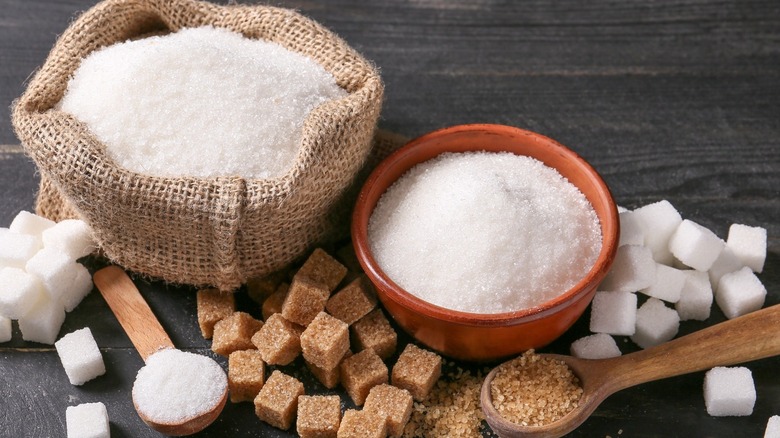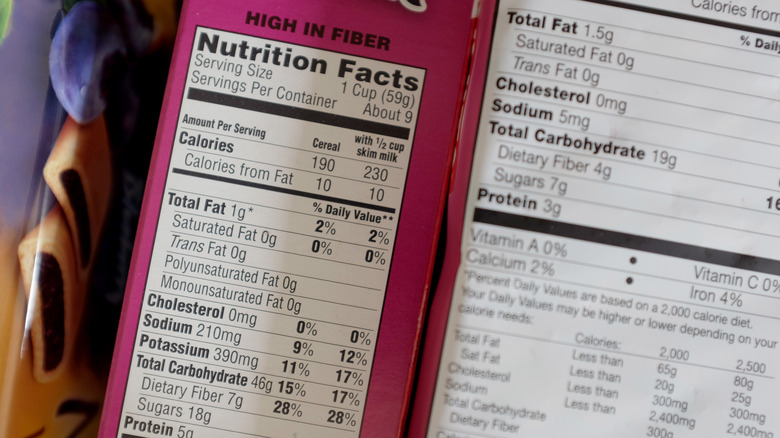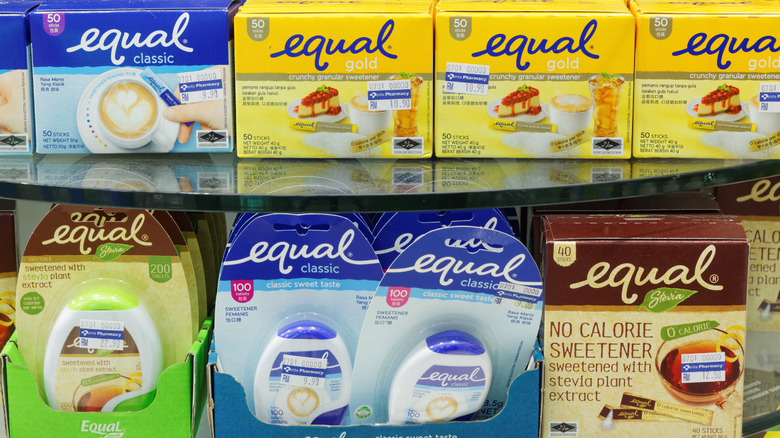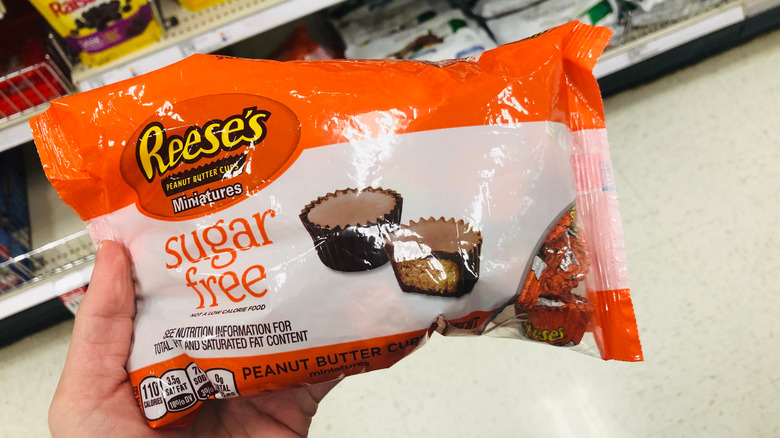Why New Nutrition Labels Have The Sugar Industry Seeing Red
Consumers who pay close attention to what they eat might have noticed a change to the Nutrition Facts label that comes with just about every food product. The new label looks like the old label, but it has more information, to reflect what the Food and Drug Administration says is "based on updated scientific information, new nutrition research, and input from the public." This new information includes serving sizes and calories in bigger, bolder print, along with an updated list of nutrients, including the removal of entries related to Vitamins A and C and the addition of Vitamin D and potassium.
There's also a new section on "added sugars," the section where manufacturers are required to list out sweeteners which have been added to the product: from sucrose, dextrose, to table sugar, syrups, and honey; and sugars from concentrated fruit or vegetable juices." Food Manufacturing says the revised labels were originally an Obama Administration initiative. The new labels were meant to be rolled out in 2020, but the rollout was pushed to 2021 by Trump Administration officials.
Critics say the new labels don't go far enough
They may look like a good idea, but not everyone appear to be excited about the new food labels. The American Medical Association (AMA) says calling out "additional sugars" in a nutrition label isn't enough. And in 2018, the organization called on the FDA to "to develop front-of-package warning labels for foods that are high in added sugars based on the established recommended daily value," per an AMA press release. The AMA also encouraged the FDA to limit the amount of sugar added to foods that claimed to be healthy or nutritious.
The new nutrition label, as well as the AMA's call for front-of-package warnings, is causing the Sugar Association to see red. It believes the labels could end up giving consumers the wrong idea.
Registered dietitian Courtney Gaine, the Sugar Association's president and CEO, called the AMA's front-of-package proposal "misleading." Gaine feels not enough is being done to inform consumers about the use of artificial sweeteners in sugar-free products. "Some want to reduce or eliminate them in their diets, but at the very least, most want to know if a product even contains them. However, this is very difficult to do under current food labeling regulations. Current regulations are incomplete. They lack transparency and can mislead consumers rather than clarify," she said at a 2020 press conference, via Food Dive.
The Sugar Association wants more transparency for foods with alternative sweeteners
In its petition to the Food and Drug Administration, the Sugar Association said the use of alternative sweeteners was on the rise because food and beverage manufacturers were trying to replace sugar with what it called "high-intensity sweeteners, non-nutritive sweeteners, sugar alcohols, and novel substances in an attempt to mimic the taste and functionality of sugar." It acknowledged that even as consumers were looking to remove or replace sugar in their diets, there was also an unwillingness to replace that with what the Association called the increased consumption "of unfamiliar substances not clearly identified on the label as sweeteners."
The association is particularly incensed by the use of the phrases "No Added Sugars, "Zero Sugar," and "Reduced Sugars" because it feels the phrasing leads consumers to believe that the food or beverage was healthier, or lower in calories than it would have been in its original form. The Sugar Association said: "In actuality, the reformulated products are often higher in calories or contain alternative sweeteners that consumers are not familiar with and may have undesirable dietary qualities such as adverse gastrointestinal effects."
Parents want to see more transparency on sugar-free packaging
To back up its assertions, the Sugar Association conducted an online survey to determine what respondents' attitudes were towards sweeteners and what they referred to as "sweetening ingredients." Among its findings, that consumers were just as keen to know about sugar substitutes as they were about added sugars. Their survey also reportedly showed that consumers were more interested in finding out about "more sugar substitute information" than nutrition information currently provides. The association says its survey, which had a sample size of 1,000 people within the United States who were over the age of 18, revealed that parents were "particularly interested in the sugar substitutes in their children's food. And when given the chance, the majority of consumers want sweeteners to be clearly identified on food labels."
Of course, this isn't to say that the Sugar Association doesn't have special interests at heart, especially as it is positioned as "the scientific voice of the U.S. sugar industry." But as Harvard Health points out, artificial sweeteners have the potential to do more harm than good because their use can have unintended negative consequences. They can be addictive, they change the way products taste, and in the case of diet drinks, "associated with a 36% greater risk for metabolic syndrome and a 67% increased risk for type 2 diabetes," per Harvard. Given this, The Sugar Association's petition could well be worth an FDA response.



